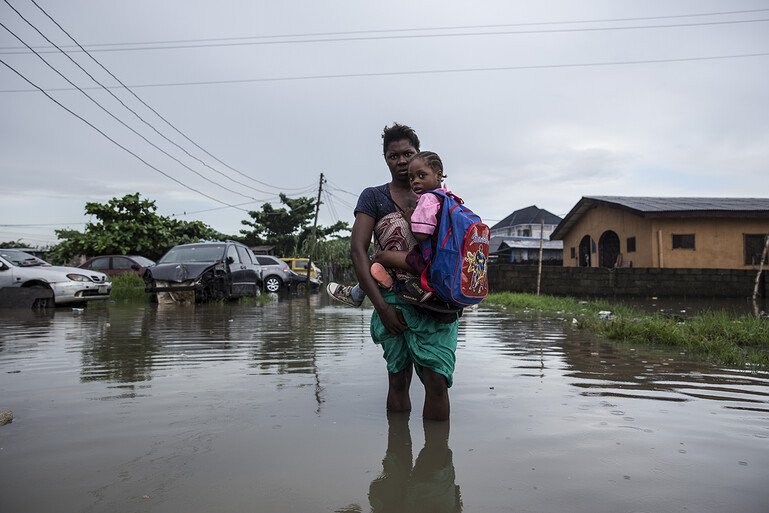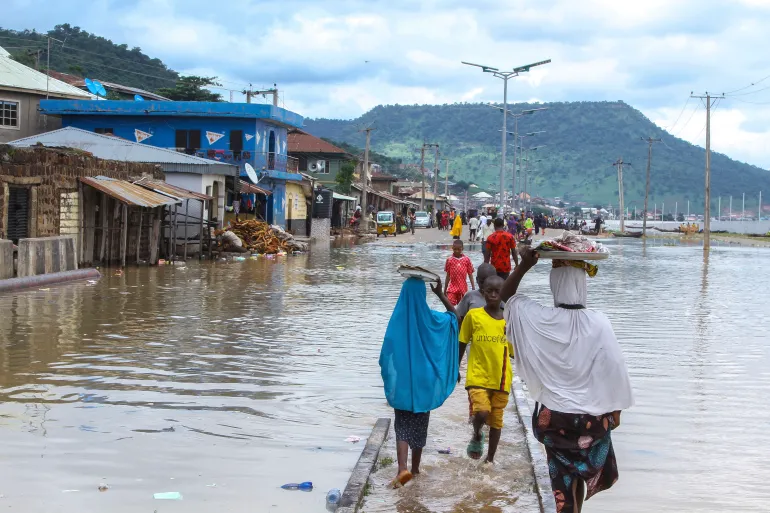Nigeria’s National Emergency Management Agency (NEMA) reported on Thursday that at least 179 people have died and tens of thousands have been displaced due to severe flooding across the country in recent weeks. The disaster has raised significant concerns about food security and economic stability in Africa’s most populous nation.

The northwestern region of Nigeria has borne the brunt of the catastrophe, with seven states accounting for 89 fatalities. Additionally, more than 25,000 hectares (61,776 acres) of farmland have been submerged, dealing a severe blow to the country’s agricultural sector.
President Bola Tinubu addressed the crisis in a statement released on Wednesday, expressing “profound grief” over the devastation caused by the floods to communities and farmlands across the country. The president’s response underscores the severity of the situation and its potential national impact.

The floods, which reached their peak in July and August, have exacerbated existing concerns about food supply in Nigeria. The country is already grappling with double-digit inflation, largely driven by escalating food prices. The destruction of vast tracts of farmland threatens to further strain the food production capabilities of a nation already facing significant economic challenges.
Compounding the crisis, heavy rains have added to the difficulties faced by the farming sector, particularly in the northeast where farmers are abandoning their lands due to persistent militant attacks. This combination of natural disasters and security issues poses a significant threat to Nigeria’s agricultural output and food security.

The current death toll represents a sharp increase from the previous year when NEMA reported 45 flood-related deaths. This dramatic rise in casualties highlights the intensifying impact of climate-related disasters in the region.
The severity of this year’s floods brings back memories of the catastrophic flooding in 2022, which was described as Nigeria’s worst in over a decade. That disaster resulted in more than 600 deaths, displaced approximately 1.4 million people, and destroyed 440,000 hectares (1,087,261 acres) of farmland.



